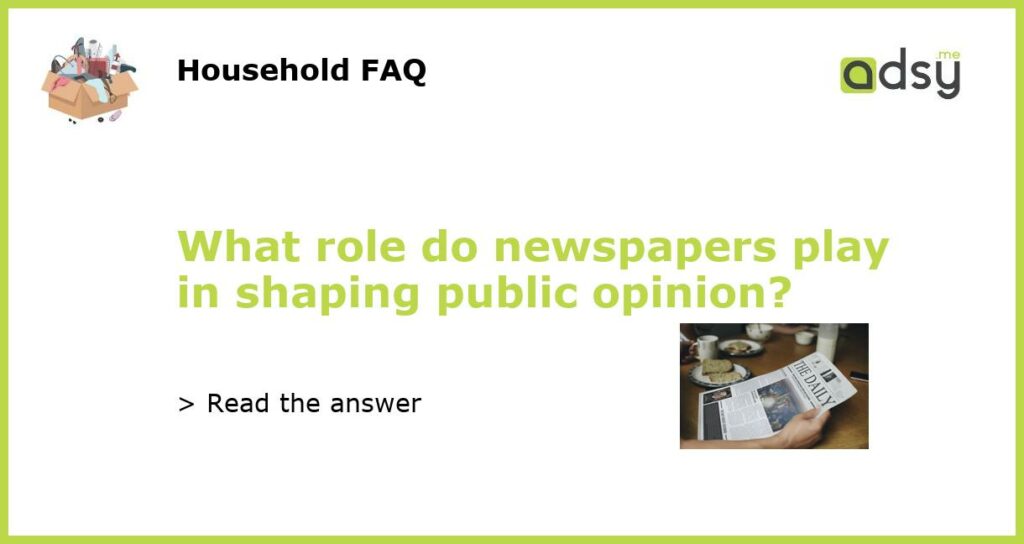Newspapers as the Fourth Estate
Newspapers have traditionally been regarded as the “Fourth Estate” of society, after government, the judiciary, and the church. The Fourth Estate is the press, which represents a check and balance on the powers of the other three estates. As such, newspapers have the power to influence public opinion, which can be both positive and negative.
Opinion Formation
Newspapers play a crucial role in opinion formation. People rely on newspapers to provide them with the latest news and information on current events. They trust newspapers to provide them with accurate and unbiased reporting. This trust enables newspapers to shape public opinion on a wide range of issues.
Agenda-Setting Function
Newspapers also have an agenda-setting function. They decide which stories to cover and how to cover them. By doing so, they influence what issues are considered important by the public. This can influence the political discourse and ultimately the actions of government.
Role of Editorial Pages
The editorial pages of newspapers are particularly powerful in shaping public opinion. Editorial boards with specific political leanings can use their influence to sway public opinion in their favor. Opinion pieces, letters to the editor, and political cartoons can also be used to shape public opinion. However, newspapers have a responsibility to provide a diversity of perspectives to their readers.
The Impact of Social Media
The rise of social media has had a significant impact on the role of newspapers in shaping public opinion. While newspapers still play an important role, social media platforms have become an increasingly influential source of news and information. Social media algorithms can create filter bubbles, where people are only exposed to news that reinforces their existing opinions. This can make it more difficult for newspapers to shape public opinion in a meaningful way.






